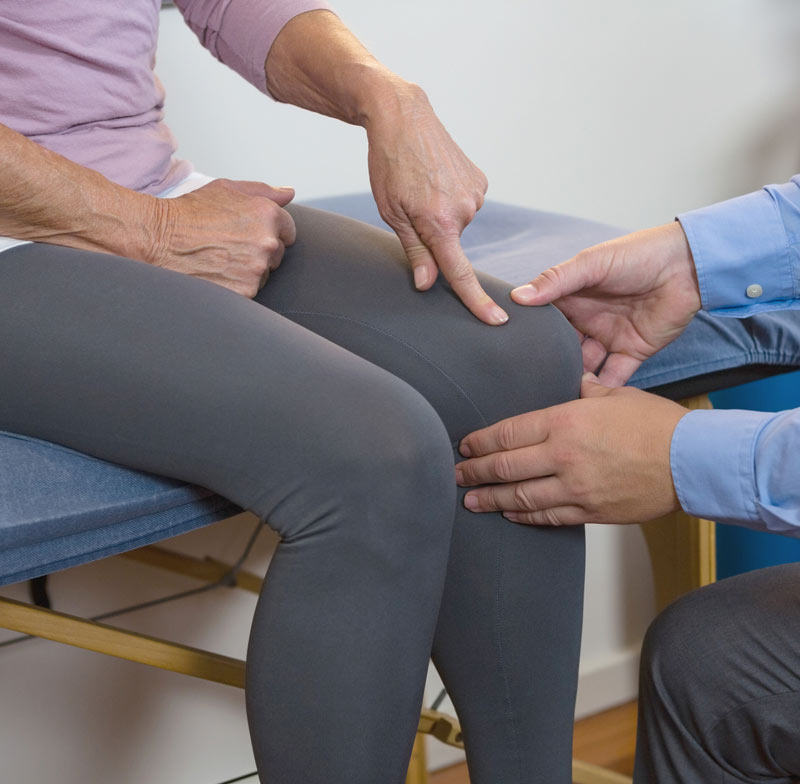

RICE Therapy (Rest, Ice, Compression, Elevation) - When it comes to dealing with pain in the knee, the first step is always the same: Rest. PES ANSERINE BURSITIS HOW TO
How to Stop Pain on the Inside of the Knee Home Remedies Since it can be hard to discern between injuries, it is important to see a doctor if you are experiencing continious pain in, on, or around the knee. This is normal to question, as the pain of a torn medial ligament can be very similar to pes anserine bursitis. When it comes to pes anserine bursitis, you might wonder if it is a torn medial ligament or an injury to the meniscus. If your pain is ongoing, you should definitely make an appointment so your physician can determine the cause. Important: Only your physician will be able to confirm whether your knee pain really is pes anserine bursitis.
Are your running shoes still supportive?. Are your muscles strong enough for the trails you've chosen?. What type of routes have you been running lately? Are they hilly or uneven, do large parts go through the woods?. If you suffer from inner knee pain or pain in the tibia or lower leg, you should examine your running training thoroughly and ask yourself the following questions: It is important to note that anyone can be affected with pes anserine bursitis, including novice and seasoned runners who have cut corners with training safely. Worn-out running shoes or a suboptimal running technique, too, can lead to pes anserine bursitis. That is, if you spend a long time on an uneven or unstable surface, your leg will be subjected to excessive strain that can result in this knee injury. When this happens, the bursa produces more fluid, which causes it to swell and put more pressure on the adjacent area on the knee.Īdditionally, muscular imbalance has a similar straining effect. The bursa works as a cushion between bone and tendon and can get inflamed by too much mechanical stress on the leg. If the bursa, a fluid filled sac between the shin bone and the tendons, has become inflamed, the diagnosis will be pes anserine bursitis. Pes anserinus (or “goose's foot”) is the name of a knee tendon structure that is made up of tendons from three muscles: the semitendinosus muscle, the gracilis muscle, and the sartorius muscle. 
Please call .uk on 03 to arrange an appointment or book online today.What is Pes Anserine Bursitis & What Causes Pain on the Inner Side of the Knee? Physiotherapy treatment will also include advice to help prevent any future re-occurrence. If it is properly diagnosed and treated, pes anserinus bursitis generally does not produce any long-term effects.
Education for future activity and exerciseĬould there be any long-term effects from pes anserinus bursitis?. Biomechanical treatment such as gait (walking) re-education or orthotics such as insoles. Physiotherapy can treat pes anserinus bursitis and help to prevent it occurring in the future. Physiotherapy treatment for pes anserinus bursitis. These are likely to be sporting activities and it is best to stop them to give the bursa a chance to settle down so that it can heal and treatment can be provided. If you have or suspect you have pes anserinus bursitis, you should stop the activities that cause you pain. What shouldn’t I do if I have pes anserinus bursitis? In the meantime you can apply ice to the affected area using a bag of frozen peas or crushed ice wrapped in a damp cloth for 15–20 minutes over the affected area every 1–2 hours.Ībove: Therapist performing knee assessment If you have or suspect you have pes anserinus bursitis, a physiotherapist will be able to relive pain and prevent the problem occurring in the future. What should I do if I have pes anserinus bursitis? The inside of the knee and/or upper inside of the shin bone (tibia) is tender to touch. Swelling on the inside of the knee and/or upper inside of the shin bone (tibia). Pain on the inside of the knee and/or upper inside of the shin bone (tibia). Symptoms of pes anserinus bursitis will build up gradually over time as there is no sudden onset. 
What are the symptoms of pes anserinus bursitis?
Flat feet causing biomechanical problems. Injury to the ligament on the inside of the knee (medial collateral ligament). There are some factors that can increase the chances of pes anserine bursitis occurring. If this happens frequently then the bursa can become inflamed and cause pain. These can occur during sporting activities such as running, golf or basketball. Repeated movements that use the three tendons (gracilis, sartorius and semi tendinosis) can put pressure on the pes anserine bursa. Above: Therapist performing soft tissue massage on the tissues aound the knee







 0 kommentar(er)
0 kommentar(er)
